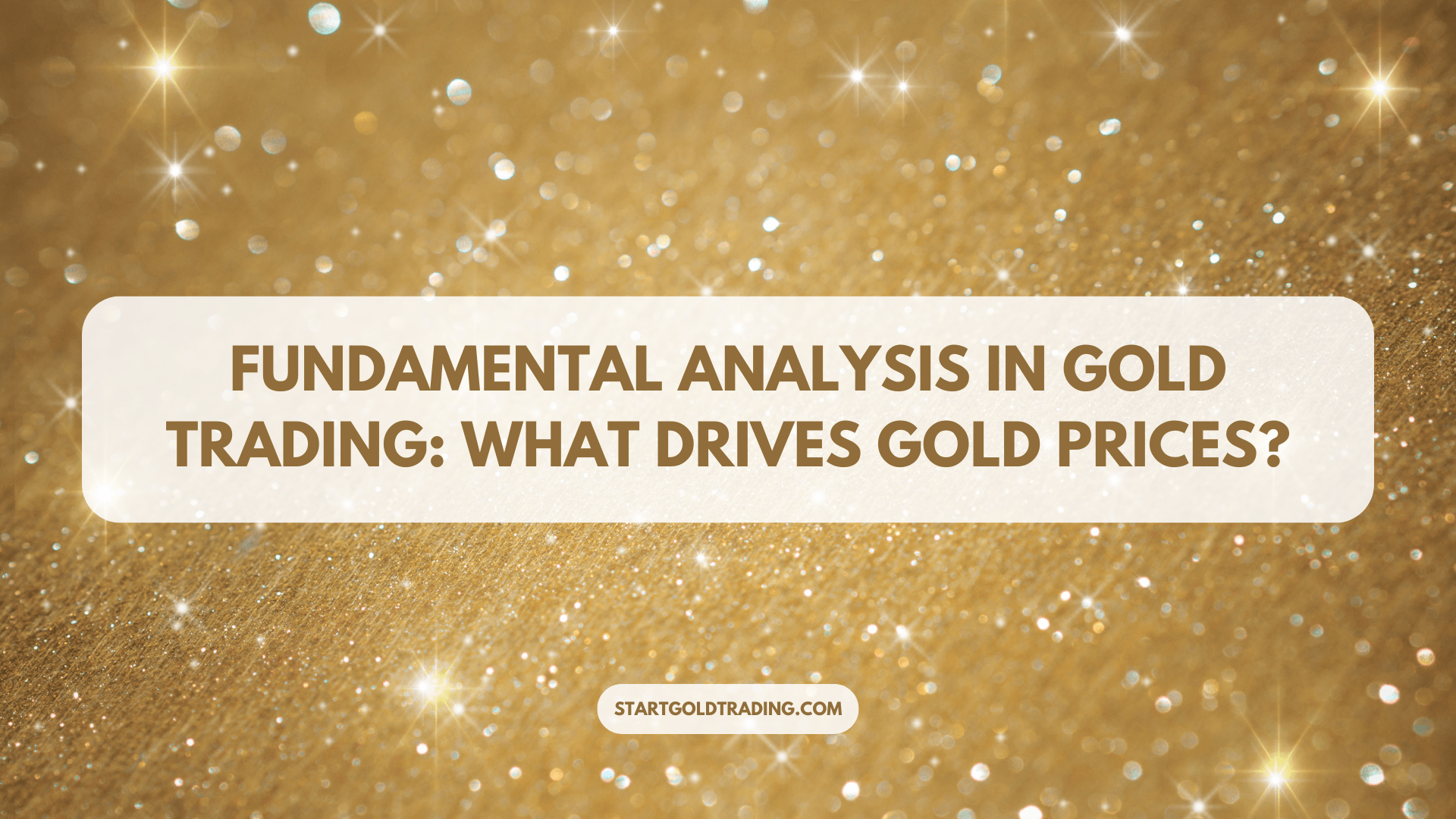When venturing into the world of gold trading, understanding what moves prices is like learning to predict the weather for a sailor. Just as a sailor must interpret various meteorological signs to navigate safely, a trader must understand fundamental analysis to navigate the market effectively. This article demystifies the factors that influence gold prices, offering beginners, including teenagers, a clear guide to the essential aspects of fundamental analysis in gold trading.
Introduction to Fundamental Analysis

Fundamental analysis in gold trading is akin to examining the health of a tree—from its deep roots to the very tips of its leaves. Just as the health of the tree is influenced by the soil, water, and climate, the price of gold is determined by underlying economic, financial, and geopolitical factors. By understanding these elements, traders can make more informed decisions about when to buy or sell gold.
Key Economic Indicators Affecting Gold Prices
Several key economic indicators can sway the prices of gold. Here’s a look at some of the most significant:
- Interest Rates: Imagine gold like a tree that doesn’t bear fruits—such as interest or dividends. When interest rates rise, new trees (like bonds or savings accounts) might start offering tastier fruits, making gold less attractive. Conversely, when interest rates are low, gold becomes more appealing as the fruits from other trees are less enticing. Generally, lower interest rates lead to higher gold prices.
- Inflation: Gold often shines brightest when inflation heats up. As the purchasing power of a currency falls (imagine your dollar shrinking in size), the price of gold tends to rise. Many investors view gold as a protective shield against the eroding effects of inflation.
- Currency Values: The strength of the U.S. dollar has a significant inverse relationship with gold prices. If the dollar weakens (imagine it as a deflating balloon), gold prices usually rise. Conversely, a strong dollar (a balloon filling up with air) can suppress gold prices, as gold becomes more expensive in other currencies.
Influence of Geopolitical Events on the Gold Market
Geopolitical events can send ripples through the gold market, much like stones thrown into a pond. These events can include:
- Political Unrest and Uncertainty: During times of political instability (imagine a storm brewing), investors often seek safe havens for their capital. Gold, known for its enduring value, is a popular choice.
- Economic Sanctions and Trade Wars: These can disrupt economic alliances and create uncertainty in global markets. Gold often acts as a financial bunker, protecting assets against the fallout from economic disputes.
- Global Crises: Events such as pandemics or large-scale conflicts can lead to increased buying of gold. Investors flock to gold as a preservation strategy, like gathering supplies in anticipation of a long storm.
Conclusion
Understanding the fundamental factors that influence gold prices is crucial for any trader, especially those just starting out. By keeping an eye on economic indicators and geopolitical events, traders can better predict potential price movements and make more educated decisions. Just as a well-prepared sailor can navigate through storms and calm alike, a well-informed gold trader can navigate through fluctuating markets. As you continue to learn and apply the principles of fundamental analysis, you’ll become more adept at spotting the perfect times to embark on your trading voyages in the gold market.

